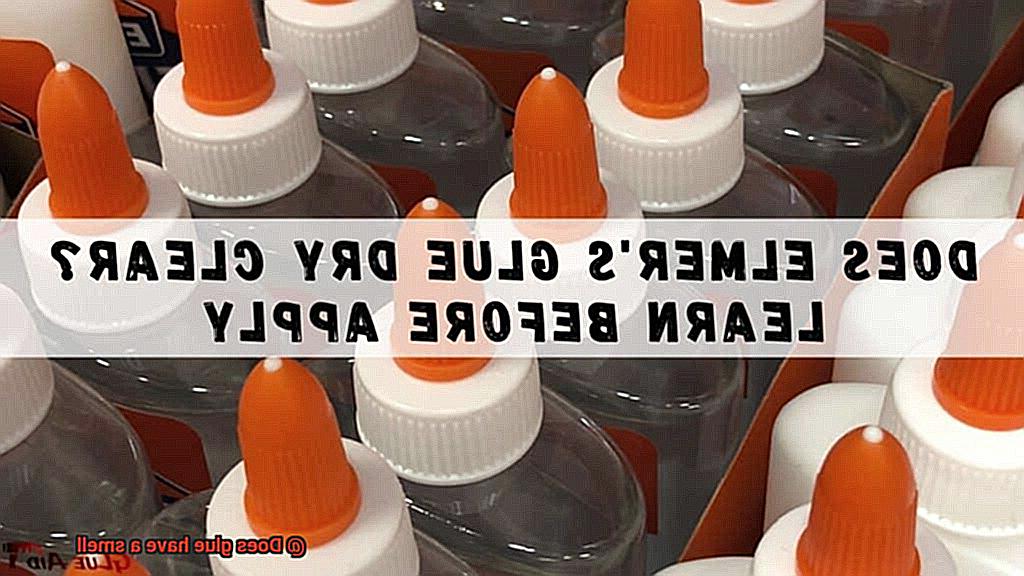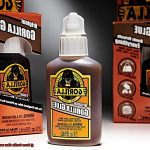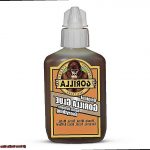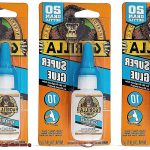Have you ever paused to ponder the peculiar scent of glue? That unmistakable aroma that transports you back to childhood crafts or lingers in the air during your DIY endeavors. Today, we embark on an olfactory adventure, delving into the captivating world of glue smells.
From the classic white school glue to the robust industrial varieties used in construction or woodworking, each adhesive possesses its own unique fragrance. It’s a testament to the mesmerizing complexity of this seemingly unassuming substance. Brace yourself as we uncover the secrets behind these diverse smells, unraveling the chemistry that sets one adhesive apart from another.
Join us as we explore which ingredients contribute to these scents and how they can range from sweet and pleasant to acerbic and sharp. Along the way, we may even discover why certain glues evoke specific emotions or trigger cherished memories.
So, prepare for a fragrant journey like no other. Buckle up metaphorically as we unlock the hidden world behind this everyday adhesive. Get ready to be enlightened and captivated by the enigmatic essence of glue smells.
Types of Glue and Their Smells
Contents
White glue, also known as school glue or craft glue, is a common type of adhesive used for various projects. It has a mild smell that is often described as slightly sweet. The scent is similar to that of Elmer’s glue or paste. This type of glue is water-based, which contributes to its relatively mild odor. It is commonly used in arts and crafts, as well as in school classrooms.
Super Glue
Super glue, also known as cyanoacrylate adhesive, has a distinct and strong smell that many people find unpleasant. The odor is often described as pungent or chemical-like. This type of glue dries quickly and forms a strong bond, but its smell can be overpowering. It is important to use super glue in a well-ventilated area to minimize exposure to the fumes.
Epoxy Glue
Epoxy glues are known for their strong bonding capabilities. They have a noticeable smell that can vary depending on the specific brand or formulation. Generally, the odor of epoxy glue is described as sharp or acrid. While not as strong as super glue, it can still be noticeable, especially in confined spaces.
Wood Glue
Wood glue, also known as carpenter’s glue or PVA glue, typically has a mild scent that is similar to white glue. However, some wood glues may have a slightly stronger odor due to the additives used in their formulation. Wood glue is commonly used for woodworking projects and provides a strong bond between wood surfaces.
Rubber Cement
Rubber cement has a distinctive solvent-like smell. This type of glue is often used for crafts, scrapbooking, and other paper-based projects. It has a strong odor that can be overpowering, especially in enclosed spaces. It is important to use rubber cement in a well-ventilated area and avoid inhaling the fumes.
Hot Glue
Hot glue, also known as hot melt adhesive, is applied using a hot glue gun. When heated, it can emit a slightly burnt odor. This odor is normal and typically dissipates quickly once the glue cools and solidifies. Hot glue is commonly used for crafts, DIY projects, and repairs.
In conclusion, different types of glue have different smells. White glue and wood glue have mild smells that are similar to each other. Super glue has a pungent and chemical-like smell, while epoxy glue has a sharp and acrid odor. Rubber cement has a strong solvent-like smell, and hot glue may emit a slightly burnt odor when heated.
Factors That Affect the Smell of Glue
Glue, like a bouquet of scents, reveals its aromatic secrets through various types – from the mild and slightly sweet fragrance of white glue to the pungent and chemical-like smell of super glue, or the sharp and acrid odor of epoxy glue. Rubber cement exudes a strong solvent-like scent, while hot glue emits a slightly burnt aroma when heated. Each adhesive unveils its own olfactory personality, adding depth to our crafting experiences.
Type of Glue:
Different types of glue have different smells. For example, liquid or white glue may have a mild, slightly sweet smell, while super glue or cyanoacrylate adhesive can have a strong, pungent odor. The chemicals used in the production of these glues contribute to their distinctive smells.
Ingredients:
The ingredients used in glue can greatly influence its smell. Glues contain various chemicals, such as resins, solvents, and additives, which can emit different odors. For instance, glues that contain volatile organic compounds (VOCs) may have a more noticeable smell compared to water-based glues that contain fewer VOCs.
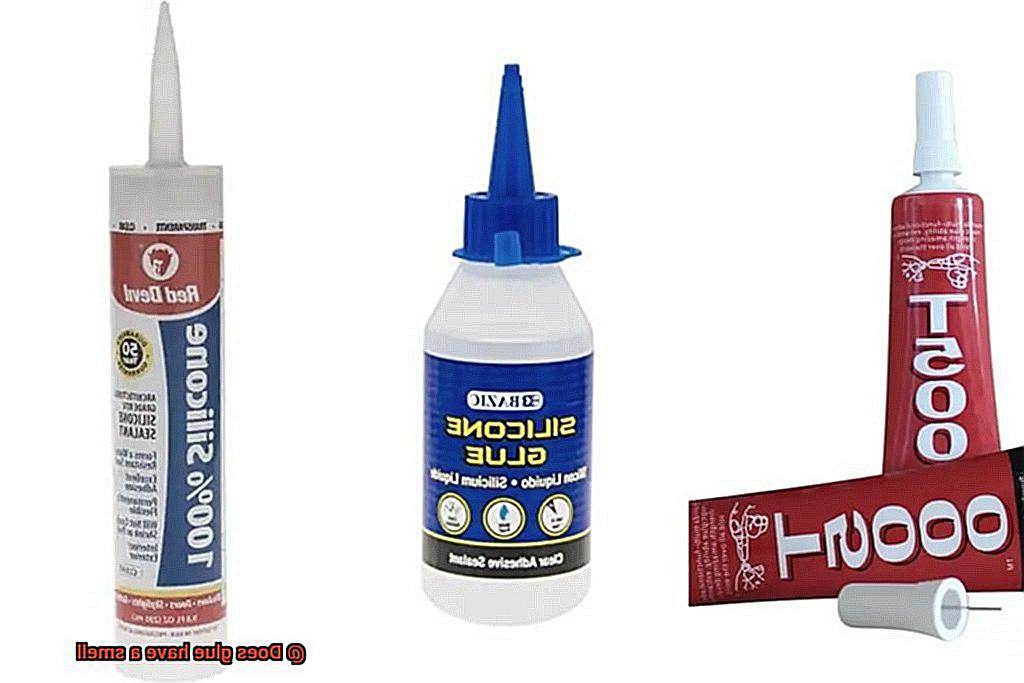
Curing Process:
The curing process of glue involves the evaporation of solvents or the chemical reaction between adhesive components. During this process, some glues release fumes that contribute to their smell. The duration and conditions under which the glue cures can affect the intensity and persistence of the smell.
Age and Storage:
The age and storage conditions of glue can also impact its smell. Over time, certain glues may start to deteriorate or break down, resulting in a change in odor. Additionally, exposure to extreme temperatures or improper storage can accelerate this deterioration and lead to a stronger or unpleasant smell.
Environmental Factors:
The surrounding environment can influence the perception of glue smell. Factors such as temperature, humidity, and air circulation can affect how strongly the odor is detected. Higher temperatures or poor ventilation may intensify the smell, while lower temperatures or better airflow can help dissipate it.
Personal Sensitivity:
Individuals may react differently to the smell of glue based on their personal sensitivity to certain odors or chemicals. Some people may find even mild glue smells bothersome or irritating, while others may not be as affected. Personal preferences and sensitivities play a role in how individuals perceive and tolerate the smell of glue.
Potential Health Risks of Glue Fumes
Glue fumes may add an aromatic touch to our crafting experiences, but it’s important to be aware that inhaling these fumes can have potential health risks. While the occasional whiff of glue may not cause harm, prolonged exposure can lead to various health issues that we need to take seriously.
One of the main concerns with glue fumes is the presence of volatile organic compounds (VOCs). VOCs are chemicals that easily evaporate into the air at room temperature. Glue fumes can contain substances such as formaldehyde and toluene, which can be harmful when inhaled.
Short-term exposure to glue fumes can result in symptoms like headaches, dizziness, nausea, and eye irritation. These effects are usually temporary and subside once the exposure ends. However, if you regularly work with glue or spend a significant amount of time in a poorly ventilated space with glue fumes, more severe health issues can arise.
Prolonged exposure to glue fumes can damage the respiratory system, leading to lung inflammation and even organ damage. Individuals with pre-existing respiratory conditions such as asthma may be more susceptible to the harmful effects of glue fumes. The long-term consequences of inhaling glue fumes in an enclosed or poorly ventilated space can increase the risk of developing chronic respiratory conditions like bronchitis or asthma.
But it doesn’t stop there. Glue fumes can also have neurotoxic effects. This means that they can affect the central nervous system and potentially lead to symptoms such as confusion, memory loss, and difficulty concentrating. The impact on our cognitive functions is something we should not overlook.
It’s important to note that different types of glues may have varying levels of toxicity. Stronger adhesives or those containing harsh chemicals tend to pose a higher risk. Therefore, it’s essential to read and follow the instructions provided by the manufacturer regarding the safe use of glue products.
To minimize the potential health risks associated with glue fumes, it’s crucial to take safety precautions when using glue. Working in a well-ventilated area or using protective equipment like masks or respirators can help reduce exposure. Remember, your health should always be a priority, even in the pursuit of creative endeavors.
If you experience persistent symptoms or severe reactions after being exposed to glue fumes, it is advisable to seek medical attention. Don’t ignore any signs that your body is giving you. Your well-being is too valuable to compromise.
How to Reduce the Smell of Glue
Glue is notorious for its strong and sometimes unpleasant odor, which can be particularly bothersome to those who are sensitive to strong smells or regularly work with glue. Luckily, there are several effective strategies you can try to reduce the smell of glue and create a more pleasant environment.
Ensure Proper Ventilation
One of the simplest ways to reduce the smell of glue is to ensure proper ventilation in the area where you are using it. Opening windows or using fans to circulate air can help disperse the odor and prevent it from becoming overwhelming. The fresh airflow will help dilute the smell and carry it away, leaving the space smelling much better.
Choose Low-Odor Glue
Another effective method is to opt for low-odor or odorless glue options. Many manufacturers now produce glues that are specifically designed to have a reduced smell compared to traditional glues. These low-odor alternatives are ideal for individuals who are particularly sensitive to smells and want to minimize the impact of glue odors.
Allow Glue to Fully Dry
Using glue in well-ventilated areas and allowing it to dry completely before bringing it into enclosed spaces can also help reduce the smell. Although it may require some patience, ensuring that the glue is fully dry before bringing it indoors will prevent the lingering odor from permeating your living or working spaces.
Wear a Mask or Respirator
If you find yourself particularly bothered by the smell of glue, wearing a mask or respirator while working with it can make a significant difference. These protective devices help filter out some of the fumes and reduce the impact of the odor on your senses. Look for masks or respirators with activated carbon filters for maximum effectiveness in reducing odors.
Use Natural Remedies
Some people have found success in using natural remedies to neutralize or mask the smell of glue. For example, placing bowls of vinegar or baking soda near the area where the glue is being used can help absorb some of the odors. Similarly, using essential oils or scented candles in the vicinity can help mask the smell with more pleasant fragrances. These natural remedies can provide a refreshing and enjoyable aroma, effectively counteracting the glue’s unpleasant odor.
Store Glue Properly
Proper storage of glue plays a crucial role in reducing its smell. When not in use, make sure to tightly seal glue containers to prevent the odor from spreading and becoming more potent over time. By sealing the glue tightly, you can contain the smell within the container and avoid any unpleasant surprises when you next open it.
Low Odor or Odorless Glues
Low odor or odorless glues offer numerous advantages over traditional glues that emit strong, unpleasant smells. These glues provide a more pleasant working environment and are safer for your health. They are available in various forms and can be used for a wide range of applications.
Low odor or odorless glues improve the user experience by eliminating the discomfort and distraction caused by strong smells. Whether you’re working in a classroom, hospital, or office, these glues create a more pleasant atmosphere, allowing you to focus on your task without any olfactory disturbances.
Furthermore, low odor or odorless glues are safer for your health compared to traditional glues. The latter often contain volatile organic compounds (VOCs) and other chemicals that can be harmful when inhaled. In contrast, low odor or odorless glues are formulated with less volatile chemicals or are entirely free from strong-smelling substances, making them safer to use.
In terms of versatility, low odor or odorless glues are available in various forms such as liquid glue, glue sticks, and adhesive tapes. This means that they can be used for a wide range of applications including arts and crafts projects, scrapbooking, paper mache, woodworking, and more.
To select the right low odor or odorless glue for your needs, consider factors such as purpose, drying time, brand reputation, and instructions. Determine the specific application you need the glue for and choose a reputable brand known for producing high-quality low odor or odorless glues. Additionally, read and follow the manufacturer’s instructions carefully to ensure proper application and bonding.
The Absence of a Strong Odor Does Not Necessarily Indicate Quality
When it comes to glue, the absence of a strong odor does not necessarily indicate quality. This common misconception can lead people to believe that if a glue has a strong smell, it must be potent and effective. However, this is not always the case.
Glues are made using various chemicals and ingredients, resulting in different levels of odor. Some glues, like epoxy or super glue, have a strong smell that is often associated with their effectiveness. However, other glues may have a milder or even odorless scent. The absence of a strong odor does not mean the glue is of low quality; it simply indicates that the particular formulation chosen by the manufacturer does not produce a strong smell.
Another important factor to consider is the subjectivity of smell perception. What one individual considers a strong odor may be barely noticeable to someone else. This subjectivity makes it unreliable to solely rely on smell as an indicator of quality. The absence of a strong odor in glue does not necessarily mean it lacks effectiveness; it could be due to differences in personal sensitivity to smell.
In response to consumer demands for low-odor products, manufacturers have developed advanced formulas that minimize or eliminate odor without compromising the adhesive properties of the glue. These low-odor glues are specifically designed for environments where strong smells can be bothersome or potentially harmful, such as schools or healthcare settings. These glues undergo thorough testing to ensure they meet required performance criteria, so their effectiveness is not compromised by the absence of a strong odor.
To accurately assess the quality of glue, it is essential to consider factors beyond just smell. Reading product labels and understanding the intended use of the glue can provide valuable information about its suitability for specific projects or applications. Additionally, customer reviews and recommendations offer insights into the performance and reliability of different brands and types of glue.
cITuKremX9A” >
Conclusion
In conclusion, the world of glue smells is a captivating and diverse one. Each adhesive has its own unique fragrance, from the mild and slightly sweet scent of white glue to the pungent and chemical-like odor of super glue. The ingredients used in glue, like resins, solvents, and additives, contribute to these distinct smells.
Various factors can influence how we perceive glue smell. The type of glue, curing process, age and storage conditions, environmental factors, and personal sensitivity all play a role. It’s crucial to be aware that prolonged exposure to glue fumes can pose potential health risks such as respiratory issues and neurotoxic effects.
To create a more pleasant environment with reduced glue smell, there are effective strategies you can employ. Ensuring proper ventilation is key. Choosing low-odor or odorless glues can make a significant difference. Allowing the glue to fully dry before bringing it indoors is also important. Additionally, wearing a mask or respirator while working with glue can protect your health. Natural remedies like vinegar or essential oils can be used to neutralize or mask the smell. Lastly, storing your glue properly will help maintain its quality.
Low odor or odorless glues offer numerous advantages over traditional ones that emit strong smells. They not only provide a more pleasant working environment but also prioritize your health and safety. However, it’s vital to remember that the absence of a strong odor does not necessarily indicate quality. When selecting a glue, consider other factors like purpose, drying time, brand reputation, and instructions.
So next time you embark on a crafting adventure or tackle a DIY project involving glue, take a moment to appreciate the enigmatic aroma that accompanies this everyday adhesive.

